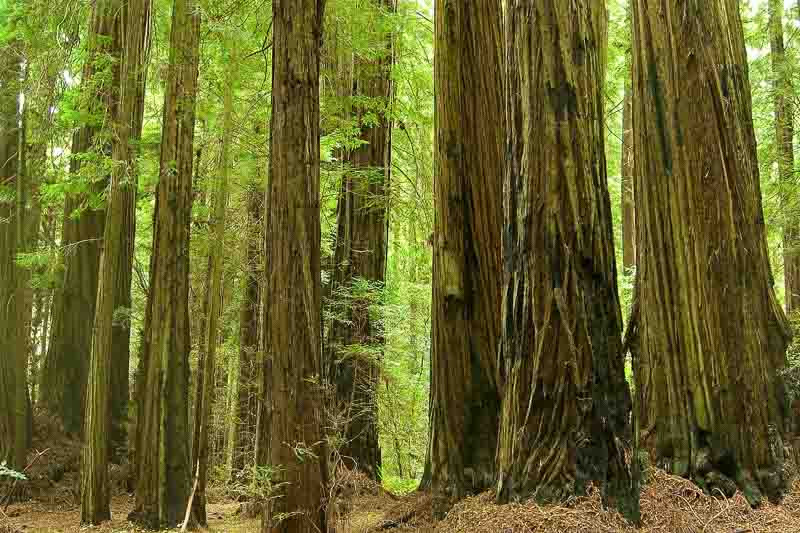Sequoia (Redwood)
Sequoia, commonly known as Redwood or Coast Redwood, is a monotypic genus consisting of the single living species Sequoia sempervirens. Native to the foggy coastal forests of California and Oregon, these trees are among the tallest and oldest living organisms on Earth.
Size: Redwoods exhibit a columnar growth habit, soaring straight upwards. Mature trees typically reach heights of 100-275 feet (30-82 meters), though some exceed 350 feet (105 meters). Their trunks are massive, often 15-20 feet (4.5-6 meters) in diameter, with reddish-brown bark that’s thick and deeply furrowed, providing fire resistance.
Cones: Redwoods produce cones, as they’re conifers. Male cones release pollen in winter, while female cones are larger and mature in autumn, dispersing seeds via wind and gravity.
Hardiness: Redwoods are hardy in USDA zones 7-9 and can adapt to various climates, though they prefer the cool, humid conditions of their native habitat.
Uses: In landscaping, Redwoods are often used as specimen trees in parks and large gardens. They’re also valued for their high-quality timber, which is resistant to rot and termites.
Redwoods can tolerate some drought but prefer regular moisture. In fact, they thrive in foggy environments, extracting moisture from the fog to supplement rainfall.
Exceptional trees: Redwoods have an incredible lifespan—some individuals live over 2,000 years—and they are the world’s tallest trees. The tallest known Redwood, named Hyperion, stands over 379 feet tall. Despite their colossal size, Redwoods have relatively shallow, spreading root systems, intertwining with other Redwoods to provide stability. Their remarkable size, resilience, and longevity make them truly majestic and vital components of the ecosystem they inhabit.

